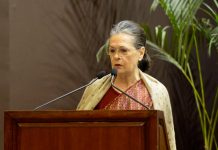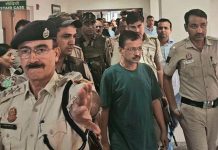
Watch closely now, are you watching me now? This is a question that Narendra Modi, the country’s prime minister, quietly asks every resident and non-resident Indian every day. The reason: he feels that the average Indian, even those who are loyal to him, fail to understand the implications of his decisions. This is especially true of the manner in which India’s PM behaves more like a CM (chief minister). Over the past 12 months, one of his major achievements was to financially empower the CMs.
Look closely now at the two Budgets presented by Arun Jaitley, the country’s finance minister, who pursued three little-known or little-debated objectives. He slashed subsidies, gave almost complete freedom to the states to spend the money allocated for the centrally-sponsored welfare schemes and went overboard in the expenditures to boost the transportation — roads and railways — sector.
Now consider the recommendations of the 14th Finance Commission, which were accepted by NDA-2 in February. The commission hiked the states’ share of the central revenues by 10 percent to 42 percent and did away with the distinction between special and general categories of states for the purpose of the devolution of funds. It urged the Centre to fully compensate the states, which lost revenues after the Goods and Services Tax (GST) was implemented across the country.
The combination of all these moves is colossal. Together, they have serious socio-politico-economic consequences. The CMs are the new Economic Kings now. They will sit on a corpus of tens of thousands of crores of rupees, which they can dole out in the manner they wish to. They will be the new nation builders who, henceforth, cannot blame the Centre for the ills that plague their states.
Funds Galore
However, before we delve into those issues, let us examine the quantum of funds that will accrue to the CMs. In Budget 2015, Jaitley hacked the central share of the 2015-16 expenditure on health and family welfare to Rs 11,358 crore from over Rs 27,000 crore in 2013-14, school education and literacy to Rs 6,153 crore from Rs 46,856 crore, and rural development to Rs 7,493 crore from Rs 58,666 crore.
During the same period, the states’ share of the expenditure on the central schemes will zoom from zero in 2013-14 to Rs 18,000 crore (health and family welfare), rs 35,781 crore (school education and literacy) and Rs 64,100 crore (rural development). This implies that earlier the Centre spent every penny that was allocated to these social sectors. Now, its role in dictating how the money is spent in 2015-16 will be minimal. The new diktats will come from the Chief Ministers’ Offices (CMOs), and not the PMO.
As per the 14th Finance Commission, the Centre will need to share Rs 5.79 lakh crore (42 percent) of its estimated receipts of Rs 15.67 lakh crore in 2015-16. Including the additional grants that the states will get, the total devolution will reach 47 percent. Over the next five years, including 2015-16, the states may receive a total of Rs 39.48 lakh crore. It will be a huge bonanza for the CMs.
In its report, the commission justified its moves: “We are of the view that tax devolution should be the primary route of transfer of resources to states since it is formula-based and thus conducive to sound fiscal federalism. However, to the extent that formula-based transfers do not meet the needs of specific states, they need to be supplemented by grants-in-aid on an assured basis and in a fair manner.”
Politics of Devolution
As the CMs become financially independent, powerful and empowered, they will have more leeway to pursue individual models of development. Over the past decade, as CM Modi went ahead with a Gujarat Model between 2001 and 2014, others like J Jayalalithaa (Tamil Nadu), Nitish Kumar (Bihar) and Naveen Patnaik (Odisha) finessed their own blueprints. Jayalalithaa launched a slew of ‘Amma’ schemes (meals, water, medicines and entertainment) and Kumar purchased bicycles for girls.
In the near future, the CMs will have more financial leeway to chase individual dreams and choose models that can work in their specific states. This may further propel the trend of political regionalism, or the rise of regional parties, which will not depend on the mainstream parties that may rule at the Centre. None of the CMs will need to park at the Capital’s state bhavans to ask for doles from the central rulers.
Consider the case of Delhi, which does not have a full-fledged status as a state. As its financial accounts showed, it went down from a surplus state in 2013- 14 to a deficit one in 2014-15. One of the prime reasons for this fiscal slide was the attitude of the Centre, which sliced the amount of central grant it gave to Delhi. Therefore, economists like Barun Mitra of Delhi’s Liberty Institute believe that higher devolution of funds to the states is a good move in the long run.
The flip side of fiscal federalism: a balance has to be struck between NITI Aayog, the reincarnation of the erstwhile Planning Commission, which will set the national economic goals, and the visions of the CMs. Else, it can lead to economic chaos and further division between the ‘have’ states and the ‘have-not’ ones.












